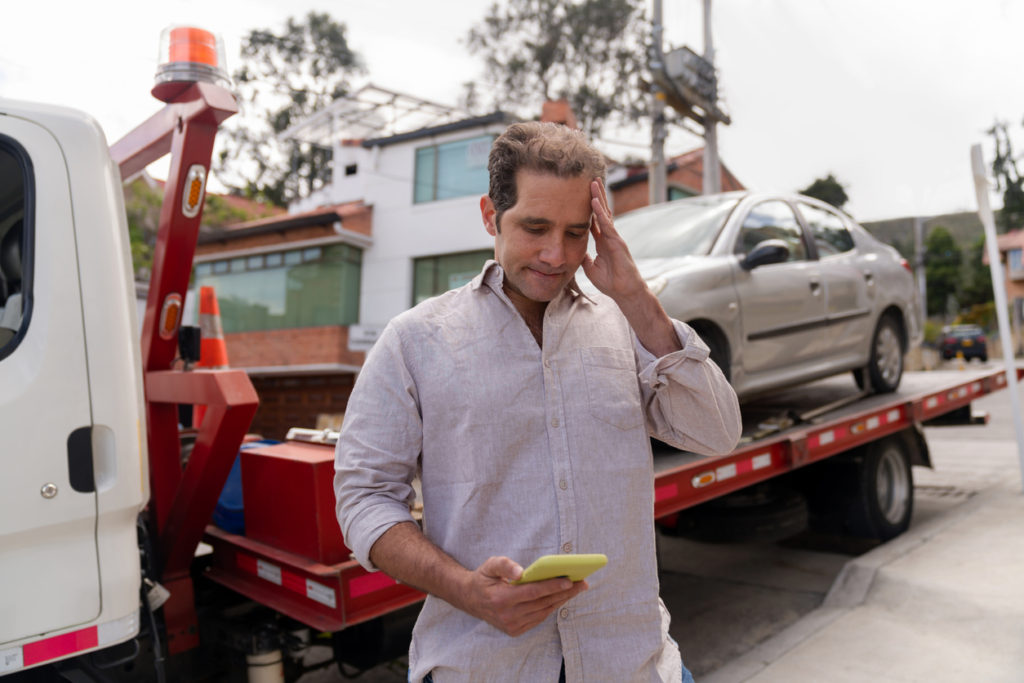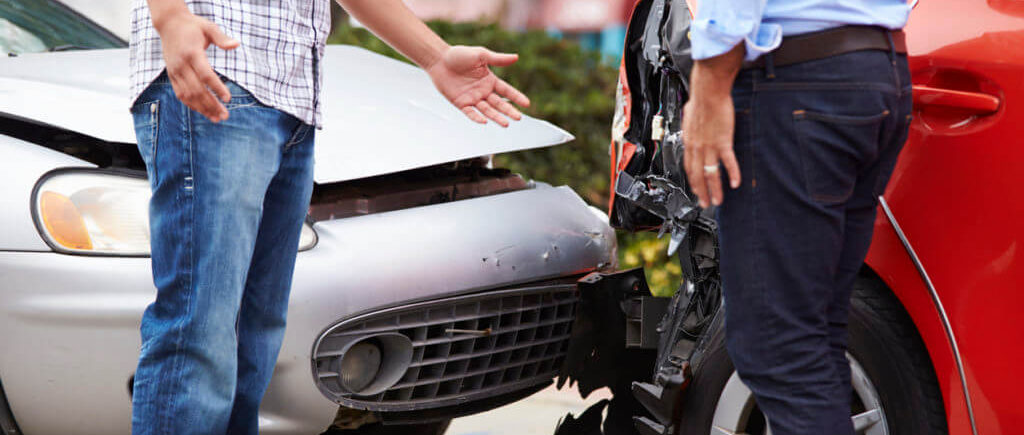A hit-and-run is when someone causes an accident and leaves the scene without providing assistance, their information, or waiting for the first responders to arrive. Hit and runs are incredibly stressful to deal with and it leaves those who have been affected by them with many new complications to their lives.
What Should You Do After a Hit-And-Run Collision?
The absolute first thing you should do after a hit-and-run accident is to contact 911 in order to ensure that if anyone affected by the accident needs medical assistance, they are able to receive it.
The second thing is to try and get the license plate information or the make and model of the vehicle that hit you. This will help authorities locate the suspect that fled the scene. If you are not injured but others are, try and help those in need until the authorities arrive.
Lastly remain at the scene of the accident until authorities arrive to be taken care of. The authorities will help you by documenting things on the police report to later use for the case against the suspect.

Common Reasons Drivers Hit-And-Run
Hit-and-run accidents are incredibly frustrating and can leave you with many new problems. Part of the reason these drivers decide to flee the scenes of accidents are:
- The driver does not have insurance and doesn’t want to receive citations for the accident.
- The driver doesn’t have a proper or valid license to drive.
- The driver could have warrants and is looking to avoid authorities.
- The driver could also be under the influence of drugs or alcohol and don’t want to be caught by police.
- Sometimes these can happen simply by the other driver not wanting to take responsibility for the accident.
Common Injuries due to Hit-And-Run Accidents

Injuries are incredibly dangerous especially in accidents like hit-and-runs due to the other driver not sticking around. This could leave you alone on the road and injured without being able to get help. Accidents range from:
- Whiplash
- Broken Bones
- Muscle Damage
- Neck Injuries
- Back Injuries
- Death
Who’s Liable in a Hit-And-Run Accident?
Pursuing legal action in a hit-and-run accident the person who hit you must be identified. Also, many insurance companies have policies specifically for hit-and-runs that would provide victims with some sort of financial aid.

Who to Contact After a Hit-And-Run?
After collecting the information listed above it is then time to contact the Accident Injury Legal Center and from there, they will set you up with an attorney that best fits your case.
To get legal help for your accident visit the Accident Injury Legal Center or contact them at 866-399-2373.
Rear-end Collisions
According to the National Highway Traffic Safety Administration (NHTSA), rear-end collisions occur most frequently nationwide. They are responsible for 29% of all car accidents and they can cause injuries. However, they are usually less disastrous because the driver of the vehicle is further from the impact.
They usually catch drivers by surprise and are sometimes impossible to avoid. When you are injured in this type of accident, you could lose wages or suffer a substantial amount of medical bills.

Common injuries in a rear-end collision
The injuries resulting from a rear-end collision can range from mild to severe. Even people that were involved in a low-speed collision can suffer injuries. Injuries include headaches, back pain, whiplash, broken bones, and more. In 2019, rear-end collisions took up 7.1% of fatal accidents in the U.S.
It is important to document your injuries when injured in an accident and have a record of medical bills.
Common causes of a rear-end collision
In most rear-end collisions, the approaching driver is usually distracted and is not paying attention to the traffic around them. This driver is usually not looking ahead and is not aware of the lead vehicle’s speed or distance from them.
If the lead vehicle is at fault, the main causes are the driver coming to a complete stop, deceleration, or the driver traveling at a slower speed than the approaching vehicle.
When the approaching vehicle is at fault, negligence is usually the leading factor. These causes include reckless driving, speeding, drowsy, or drunk driving. Approaching drivers can also experience brake failure or be driving in slippery conditions, resulting in a rear-
end collision.
Who is at fault for the accident?
In this type of collision, the “approaching vehicle” is usually at fault. There are states that enforce a law that places fault on the approaching driver for distracted driving or following another vehicle too close behind.
There are certain situations in which the lead driver can be at fault for a rear-end accident. For example, if a vehicle merges or turns without providing a signal or adequate space, they can be at fault. However, these situations are less common and can be difficult to prove.
What to do if you are injured in a rear-end collision
If you are unsure of who is at fault or don’t know what to do if you are injured, it is important to get in contact with an attorney. They will be able to clarify your situation and can help you get compensation if you qualify. You might be able to receive compensation for lost wages, medical bills, and vehicle damage.
Get in contact with the Accident Injury Legal Center to find an attorney that is qualified to help you with your case.
